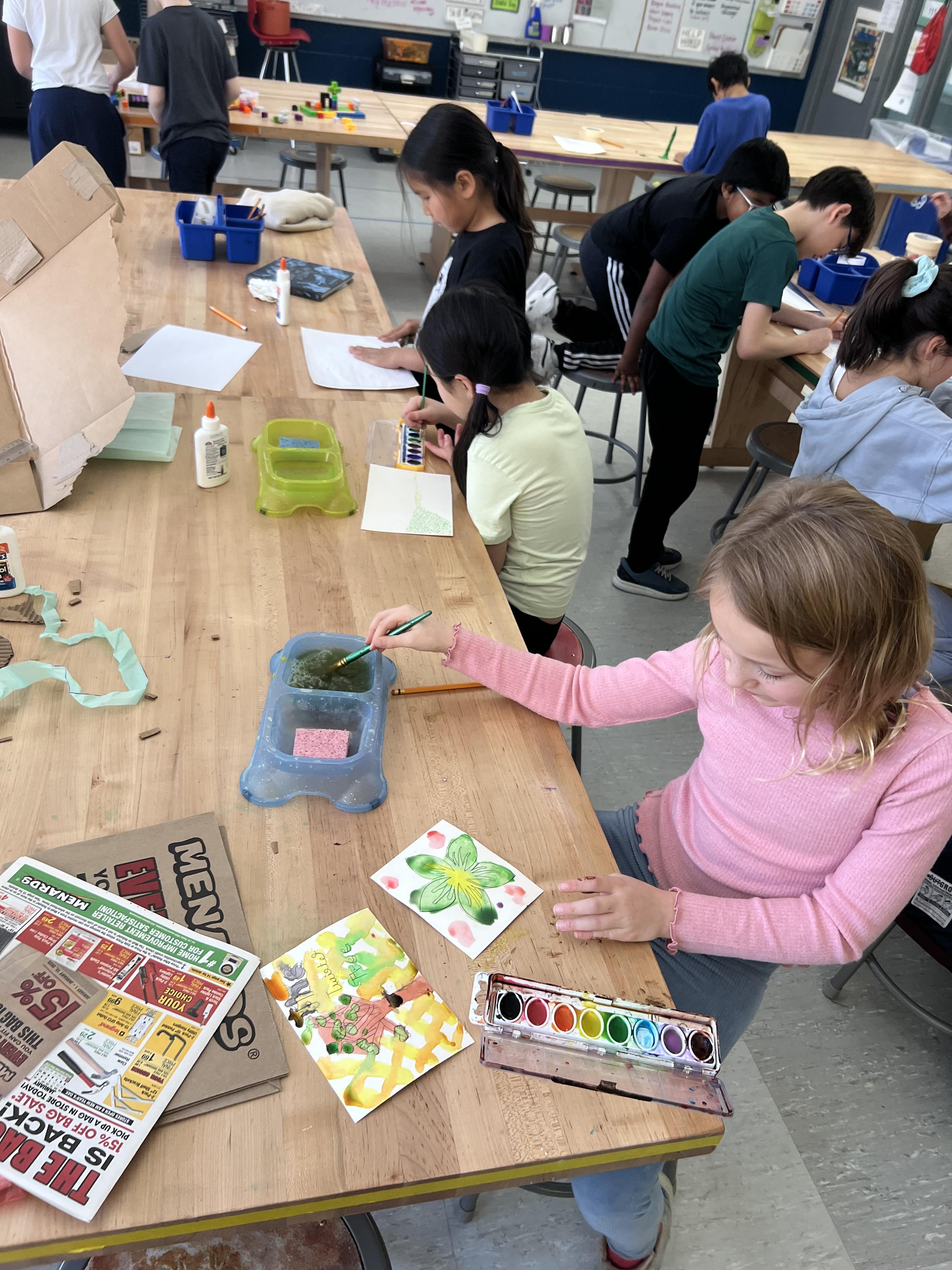
Visual Arts at Decatur
Artists in the Studio
Creativity matters because creativity fuels our society, empowering us to imagine, innovate, and shape the world we inhabit.
During Class, artists will explore 4 different types of studio work:
- Take Homes (A one class period creation that they can bring home with them)
- Exploration & Practices (Structured play that allows them to explore and practice with a variety of art materials)
- W.O.W. Projects (An original work of art that takes multiple weeks to complete and shows growth as an artist)
- Skill Builders (Material specific exercises that promote growth within one medium)
Teaching for Artistic Behavior (TAB)
This is a style of choice-based art education that focuses on the students, their interests, and their ideas. Students are viewed as authentic artists, and groups of materials are made available and introduced to the students one by one. As their TAB educator, I act as a guide and mentor to students as they problem solve and explore. I challenge students to add more meaning to their work and incorporate personal experiences. I also serve as their resident artist and specialist by determining the appropriate standards and content to introduce next. This helps students determine the most effective materials or methods to make their ideas come to life.
The majority of artwork made in a TAB classroom is not necessarily meant for exhibition. Play and experimentation are essential to creative development and confidence in risk taking. Process is valued over product to cultivate an environment that supports creativity. While majority of our class time centers around a TAB mindset, there are occasions where we focus on projects that align closer to a standard arts classroom. These teacher-led group projects will still offer choices for the artist to direct the outcome of their own creation.
Studio Habits of Mind
Envision
Learning to picture mentally what cannot be directly observed and imagine possible next steps in making a piece.
Engage & Persist
Learning to embrace problems of relevance within the art world and/or of personal importance, to develop focus and other mental states conducive to working and persevering at art tasks.
Express
Learning to create works that convey an idea, a feeling, or a personal meaning.
Observe
Learning to attend to visual contexts more closely than ordinary “looking” requires, and thereby to see things that otherwise might not be seen.
Reflect
Question and Explain: Learning to think and talk with others about an aspect of one’s work or working process.
Evaluate: Learning to judge one’s own work and working process, and the work of others in relation to standards of the field.
Develop Craft
Technique: Learning to use tools (e.g., viewfinders, brushes), materials (e.g., charcoal, paint), learning artistic conventions (e.g., perspective, color mixing);
Studio Practice: Learning to care for tools, materials, and space
Stretch & Explore
Learning to reach beyond one’s capacities, to explore playfully without a preconceived plan, and to embrace the opportunity to learn from mistakes and accidents.
Understand Art Worlds
Classroom: Learning about art history and current practice.
Communities: Learning to interact as an artist with other artists (i.e., in classrooms, in local arts organizations, and across the art field) and within the broader society
Creativity is a crucial part of the human experience. Through art, collaboration, and self-expression we are all able to better understand ourselves and create community within the world around us.
Posts


